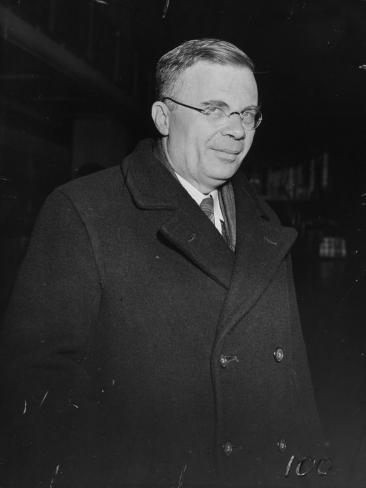Ulos
Ulos is the traditional cloth of the Batak people of North Sumatra. Different kinds of ulos have different ceremonial significance. The ulos is normally worn draped over the shoulder or shoulders, or in weddings to ceremonially bind the bride and groom together.
Ulos are traditionally hand woven and in the case of higher-quality examples are significant family heirlooms, to be worn at important events, such as funerals and weddings.
With increasing modernisation has come the decline in significance of the ulos, with many varieties no longer in demand.
According to Batak people, there are 3 sources of warmthness for human; sun, fire and ulos.
Ulos is said to be a source of warmth because they were living on cold mountains. This natural condition makes the sunlight insufficient to give warmth especially at night. Then, they create something that is able to give them warmth, also believed to be able to give the men bravery and the women strength against infertility voodoos.
At first,
Ulos was only used as an ordinary cloth. But it later developed to a symbol of love, traditional ceremony requirements, and society structural system symbol. Even
Ulos is believed to have magical religious power and thus considered 'sacred' and that it has special power to protect the user.
There are many kinds and motives of
Ulos, which have their own respective meaning in accordance to the characteristic, condition, function, and some relation. When it is used given to whom, and which traditional ceremony like wedding, birth, death and other rituals will never run without
Ulos. If
Ulos is used by a man, the upper part of it is called ande-ande, the lower called singkot, the one used on head called tali-tali, bulang-bulang or detar. But, because of its sacred value, not all
Ulos can be used in daily activities.
Ulos Jugja, Sadum, Ragidup, and Runjat are only used in some occasions. In everyday life, men wear
Ulos in box pattern with black shirt named baju Kurung without shoes nor sandals.
Ulos used by female, the bottom called haen, the back called hoba-hoba and if it used as sacrf it called ampe-ampe. If used as head cover called saong, and if used to carry baby called parompa. In daily, the female using black long dress and head cover.
There are three ways to use
Ulos. First, siabithononton. The
Ulos used for this are Ragidup, Sibolang, Runjat, Djobit, Simarindjamisi, and Ragi Pangko. Second, sihadanghononton (used as head cover). The
Ulos used for this are Sirara, Sumbat, Bolean, Mangiring, Surisuri and Sadum. Third, sitalitalihononton (tied at hip).
Ulos used for this are Tumtuman, Mangiring and Padangrusa. Using
Ulos in the right way is extremely important to make good looking and also to fulfill the philosophy meaning in
Ulos.
Ulos as love symbol it called mangulosi. In Batak culture, mangulosi (giving
Ulos) is symbol of love to the receiver. In Mangulosi, there are common rules, mangulosi only can be done by people who has family relation or to give it to lower social status people. Like, parents can mengulosi their children, but not opposite. If want to mangulosi a child who give birth ffirst child,
Ulos given is Ragidup Sinagok.
Ulos given to special guest is
Ulos Ragidup Silingo.
Ulos made with manual loom machine. A spinner used to make cotton into yards. Pamanggung using to tie yards. Pagabe to hold the yard. Baliga, used to organize yards. Hatalungan ised to separating yards. Pamapan used to make the yard into cloth. Palabuan (Periuk tanah)used to saving coloring water.
Ulos made of cotton and the coloring water made of barks, grass, roots, mud or leaves.
Q&A
What is the tradition of Batak?
The Batak have a rich cultural tradition that includes dance, music, and weaving. They also have elaborate rituals for weddings and funerals.
What materials did the Batak tribe use?
The Batak tribe traditionally used materials such as bamboo, wood, rattan, and palm leaves for their homes, furniture, and crafts. They also used cotton to make their textiles.
What is Mangulosi?
Mangulosi is a traditional dance of the Batak people that originated in North Sumatra, Indonesia. It is performed to celebrate important events and occasions.
What is ulos in English?
Ulos is a traditional cloth made by the Batak people of North Sumatra, Indonesia. It is used for various purposes, including clothing, blankets, and ceremonial gifts.
What are Batak known for?
The Batak people are known for their rich cultural heritage, including their music, dance, and weaving traditions. They are also known for their hospitality and strong sense of community.
What is the origin of Batak?
The origin of the Batak people is not clear, but it is believed that they are descended from the Austronesian people who migrated to the Indonesian archipelago thousands of years ago.
What is Batak armband made of?
Batak armbands are typically made of silver or brass and are often intricately engraved with traditional motifs.
Is Batak a culture?
Yes, Batak refers to both an ethnic group and a distinct culture in North Sumatra, Indonesia.
What language do Batak tribes speak?
The Batak people speak several distinct languages, including Toba, Karo, and Simalungun. These languages are part of the Austronesian language family.
What is the culture of Bataks of Palawan?
The Bataks of Palawan are an indigenous tribe in the Philippines. They have a unique culture that includes traditional practices such as hunting, fishing, and weaving. They also have a strong sense of community and respect for their elders.
Why wear arm bands?
Arm bands have been worn for various reasons throughout history, including as a form of identification, to signify membership in a group, or as a decorative accessory.
What culture are arm bands from?
Arm bands have been worn by various cultures throughout history, including ancient Egypt, Rome, and Greece. They have also been worn by Native American tribes and African tribes.
What material is Captain armband?
The material of a captain armband can vary depending on the context. It may be made of fabric, leather, or other materials, and may be decorated with embroidery or other embellishments.
What religion is Batak Karo?
The Batak Karo people practice a unique blend of Christianity and traditional animist beliefs. They also have their own distinct rituals and ceremonies.
Is Batak language endangered?
Some of the Batak languages are considered endangered, as their usage has declined in recent years due to the dominance of Indonesian and other national languages.
Where are Batak houses from?
Batak houses are traditional houses built by the Batak people in North Sumatra, Indonesia. They are often built using traditional materials such as wood, bamboo, and thatch, and feature distinctive architectural elements such as carved wooden panels and ornate roofs. Batak houses are designed to be sturdy and durable, with the ability to withstand earthquakes and other natural disasters.
 Kawi is derived from the Pallava script mentioned by scholars of Southeast Asian studies such as George Coedxs and D. G. E. Hall as the basis of several writing systems of Southeast Asia. The Pallava script was primarily used to write middle Tamil.
Kawi is derived from the Pallava script mentioned by scholars of Southeast Asian studies such as George Coedxs and D. G. E. Hall as the basis of several writing systems of Southeast Asia. The Pallava script was primarily used to write middle Tamil.






























